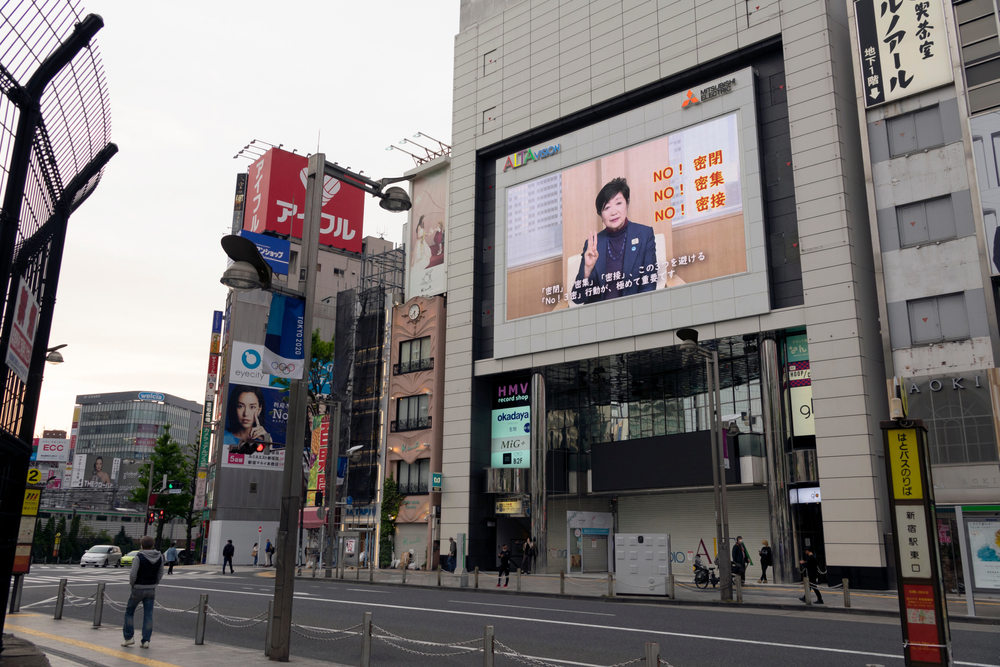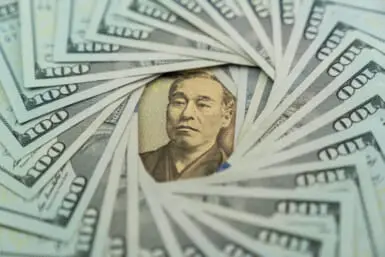Living in the age of COVID-19 is like dangling from a giant pendulum that swings back and forth between glimmers of optimism and a more pessimistic reality. The optimism of flattening curves across the world offers reprieve for those most vulnerable to the pneumonia-like illness and for the medical workers whose daily lives have turned into an ongoing trench war against an invisible enemy.
The pessimistic, or realistic, approach argues that it will be a long time before life returns to normal – or whatever the new normal may be in a post-coronavirus world. Japan has effectively skipped the full-scale lockdown phase, the standard first step in containing the spread of the virus, likely pushing the finishing line further over the horizon.
Admittedly, on April 27 Tokyo confirmed only 39 new patients diagnosed with the illness, the lowest COVID-19 daily tally in a month. But as testing is still insufficient – 10,000 PCR tests per day across the country; considerably fewer than the recommended amount – all numbers should be taken with a grain of salt.
Add to that an ever-straining healthcare system, porous prefectural borders, a relatively high number of infections with no known source of contraction, and the reality that public compliance of social distancing protocols is not a foregone conclusion, lifting the nationwide state of emergency on May 6 seems fanciful at best.
Govt. mulls extending emergency by about a month https://t.co/xg0pqFgnUi
— NHK WORLD News (@NHKWORLD_News) April 29, 2020
Dangers of Reopening Society
On April 21, Dr Takeshi Kasai, the WHO regional director for the western Pacific, urged world leaders to practice restraint when considering lifting lockdowns and relaxing social distancing measures. “This is not the time to be lax. Instead, we need to ready ourselves for a new way of living for the foreseeable future,” he said.
Japan may already be one step too close to reopening society. Restaurants, cafés and barbers are still open for business (albeit with reduced hours); some pachinko parlors have decided to remain open while others have shut, causing gambling addicts to use public transport and travel longer distances to watch metallic balls ping around a cabinet; and Japan’s reliance on archaic tools like fax machines, bankbooks, stamp-sealing and postal mail forces people into public places, or to work, for tasks they can’t carry out digitally.
When Japan declared the state of emergency on April 7, Prime Minister Abe called for all citizens to reduce contact by 70–80% and requested that non-essential businesses close, upon which infections were expected to peak in two weeks. With infections across the country still rising, although slowly, Abe has few grounds on which to fully reopen society.
Lifting the state of emergency would also remove the government’s ability to expropriate land for use as medical facilities, and it would no longer be able to request emergency transportation of goods; both of which could be vital in the face of a resurgence.
OPINION | Tokyo should "prepare for the worst" in the #coronavirus crisis, Hiroyuki Akita writes.https://t.co/ML4ptGUoEK
— Nikkei Asia (@NikkeiAsia) April 27, 2020
Cautionary Tales
For now, Japan has a comparatively low death rate, largely thanks to its quality medical care infrastructure and the healthiness of its elderly population. But a continuously updated graph developed by John Hopkins University charting COVID-19 case numbers in developed countries, displays some disconcerting visuals.
Firstly, the majority of nations, bar Japan and Singapore, showed steep increases before tracing arcs that eventually plateaued. Whereas Japan is still battling upslope like an alpinist faced with a challenging peak – steadily ascending with intermittent dips, with no real leveling in sight. If this continues, it will mount pressure on hospital ICUs that are already at capacity and seeing an increasing number of critical patients.
Singapore’s data is equally worrying for Japan. The affluent city state was previously lauded for its rapid and effective virus response tactics, but is now seeing a level of outbreak eclipsing all other Southeast Asian nations. Singapore likewise avoided a total shutdown of society, but has now U-turned with strict regulations in place until May 4.
Singapore is not alone in offering a timely lesson to the rest of the world. Taiwan and Hong Kong, neighbors to China, acted swiftly with closures of public areas, mass surveillance and testing. Both have witnessed recent viral resurgences. Several Chinese cities, including the capital Beijing, also saw new cases of COVID-19 in the last week, causing widespread fears that a second, potentially more virulent, wave is en route.
Meanwhile, Japan prepares to enter its most crucial week in the viral saga to date.
World Heritage Sites in Japan on alert against infections as Golden Week holidays start https://t.co/BDiWYcUWYx
— The Japan Times (@japantimes) April 29, 2020
A Not-So Golden Week
Golden Week, Japan’s longest string of annual holidays, which runs through May 6 this year, has been rebranded “Stay at Home Week to Save Lives.” Tokyo Governor Yuriko Koike has strongly urged against the temptation to travel on a week where fleets of family-packed sedans and convoys of vehicles usually jam the highways heading out of Tokyo.
A stretch of sunny weather slated for Golden Week serves as a paradoxically dark omen. In spite of the government’s social distancing requests, when the sun has come out, so have the crowds. If history repeats itself, Koike’s words may in fact ring true that: “Unfortunately, this year’s Golden Week won’t be so golden.”
Decisive Action
Prevailing expert opinion slammed the state of emergency declaration for coming too late. And when it did, it was evidently half-baked. One does not treat an axe wound with a Band-Aid, but much of Japan’s crisis management has been about as ineffective. Over the course of this week, as the administration deliberates over whether to lift the state of emergency, a measured, data-driven approach is imperative.
The current state of affairs in Japan reflects what many other nations will look like as they begin to slowly reopen society over the coming months. Japan has skipped one phase of the containment process; it can’t afford to blast carelessly through another.
Feature image: Fiers / Shutterstock.com









